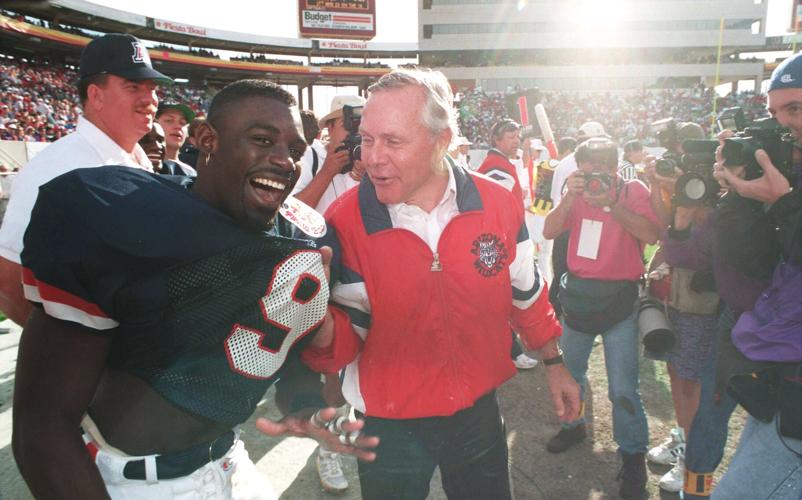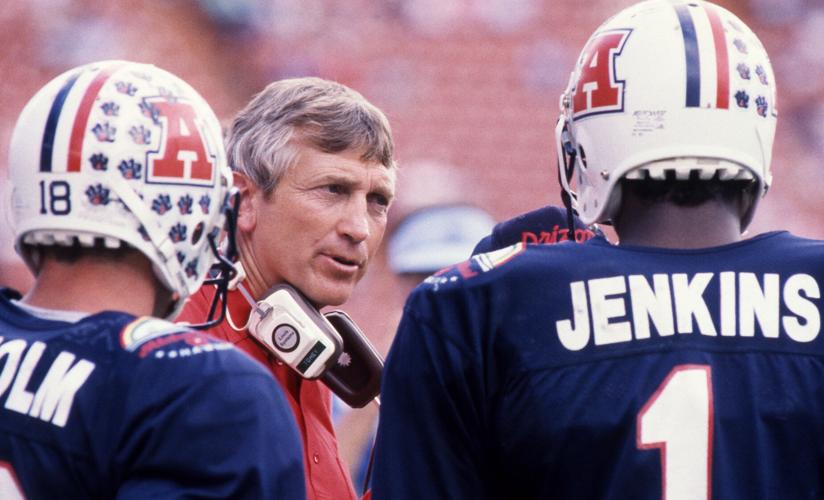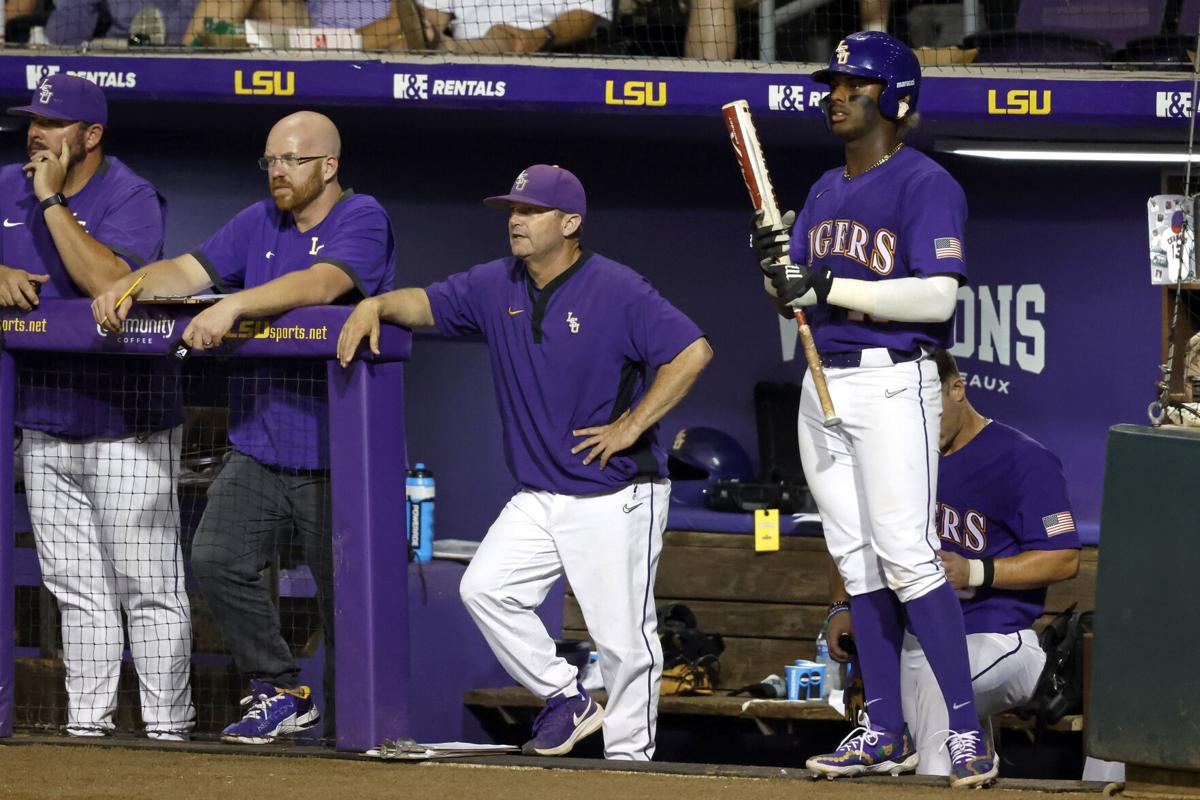A few days after Todd McCorkle coached Arizona’s women’s golf team to the 2000 NCAA championship, Wildcat athletic director Jim Livengood answered a phone call from Georgia AD Vince Dooley.
“Jim,” he said, “I’m seeking your permission to talk to Todd about becoming our golf coach at Georgia.”
Even though McCorkle had assembled the nation’s No. 1 incoming recruiting class — including future LPGA Tour winners Lorena Ochoa and Natalie Guilbis and a roster that included Laura Ianello, the soon-to-be finalist at the U.S. Women’s Amateur — McCorkle couldn’t resist Georgia’s offer.
“They almost tripled my salary,” he said. “They just spent millions on a new clubhouse and practice facility. “
McCorkle was gone — poached — less than a month after the Wildcats won the national championship. It proved to be a rewarding move: McCorkle coached Georgia to the NCAA championship the following spring.
Poaching is the oldest game in college sports, and no school is immune.
Such was the case two years ago when LSU successfully poached Arizona baseball coach Jay Johnson, raising his salary to about $1.2 million. The money was probably no more influential than handing Johnson the Tigers’ rich baseball recruiting platform and the keys to a program that had won six national championships since 1991.
Johnson was gone in a heartbeat. It took him a mere two years to win LSU’s seventh national championship, Monday night at the College World Series.
On first glance, it might appear that Arizona has been a steppingstone school, a well-poached athletic department looking over its shoulder after each successful run to an NCAA Tournament.
But that’s not the case at all.
Over the last 100 years, Arizona has been among those least affected by well-endowed poachers looking for a rising coaching (or administrative star). The UA has been anything but Job-Hoppers U.

UA coach Dick Tomey enjoys the aftermath of the Wildcats' 29-0 victory of the Wildcats' win over Miami in the Fiesta Bowl on New Year's Day 1994. UA finished the 1993 season ranked No. 10 in the nation.
In 1994, Oklahoma phoned Dick Tomey after his Desert Swarm teams gained a national football identity: “Would you be interested in coaching the Sooners?”
Tomey stunned OU athletic director Donnie Duncan by suggesting the Sooners pursue Arizona’s defensive coordinator Larry Mac Duff instead.
No thanks.
It wasn’t unlike Kentucky’s pursuit of Lute Olson after the 1985 and 1989 basketball seasons, an intense and nerve-wracking period for Arizona that ended with Olson choosing to stay in Tucson.
A few years later Arizona State pursued Sun Devil graduate Mike Candrea and asked if he would be willing to relocate his softball prowess to his alma mater in Tempe.
ASU was about a decade too late.
The Wildcats were similarly fortunate when Hall of Fame swimming coach Frank Busch, winner of two NCAA championships and four national coach-of-the-year trophies, resisted strong interest from both USC and Florida in the 2000s.
Not that the UA hasn’t lost a few.
Some of the leading coaches and administrators in UA sports history exited Tucson after big-time success, wooed by the brand and finances at Texas, Alabama, Oregon and USC, among other hot spots.
In 1939, after Tex Oliver coached the Wildcats to a 32-11-4 record over five seasons, putting Arizona on the college football map for the first time, Oregon offered to double his salary. Oliver was gone. Not that it worked out; minus his “Blue Brigade” roster at Arizona, Oliver struggled at Oregon, going 23-28-3, and was fired.
In a 1980s interview, Oliver told me leaving Arizona was “the biggest mistake of my career.”
A generation later, 1972, Arizona’s men’s tennis coach Dave Snyder built the UA into a perennial top-10 power. The Wildcats twice placed third in the NCAA finals and from 1963-72 didn’t fail to finish in the top 10 in men’s tennis.
Alas, Snyder’s alma mater, Texas, hired him in the summer of 1972. He went on to be a Hall of Fame coach for the next 28 years as Arizona’s men’s tennis program went bust.
I would never consider Hall of Fame football coach Jim Young a job-hopper, but after he coached the long-struggling Arizona football team to successive records of 8-3, 9-2 and 9-2 in the 1970s, Washington AD Joe Kearney phoned Arizona AD Dave Strack and asked for permission to speak to Young.
According to Young’s memoirs, Strack delayed in telling Young of Washington’s interest for such an extended period that by the time Young learned of Kearney’s call, the Huskies had hired a new coach. Someone named Don James, future Hall of Famer and national champ.
Young wrote that he became proactive in the job market a year later, 1976, and aggressively interviewed with Purdue, accepting the Boilermakers job, going 38-19 in five seasons.

Unable to receive a multiyear contract, Coach Larry Smith left the UA for USC after the 1986 season.
A decade later, after building Arizona into a legit Top 25 football program, establishing dominance over Arizona State, Larry Smith was offered the job at USC. Smith was torn; he wept while telling AD Cedric Dempsey about his indecision. Arizona or USC?
Are you kidding?
The decision was soon made easy: By state law, Arizona could offer Smith no more than a one-year contract. He ultimately accepted USC’s four-year deal and went to back-to-back-to-back Rose Bowl games
That’s Arizona’s short (coaching) history as a poaching victim, although the Wildcats weren’t able to avoid losing two of their leading ADs, Dempsey and Greg Byrne. Dempsey left Tucson to become executive director of the NCAA and Byrne to become Alabama’s AD.
Before and since, the huge majority of Arizona’s legendary coaching names — Olson, Tomey, Candrea, Busch, Ianello, Pop McKale, Jerry Kindall, Rick LaRose, Dave Murray and now Adia Barnes — did not bite when the poachers approached.
But the process is never-ending. Someday soon, it wouldn’t be a shock if a blueblood or two send their poachers in attempt to get Tommy Lloyd, Clancy Shields or Jedd Fisch to take the money and run.
Stay tuned.
<&rule>
The Georgia Bulldogs are looking for their third consecutive title and are the frontrunners heading into the season, which kicks off in August.







